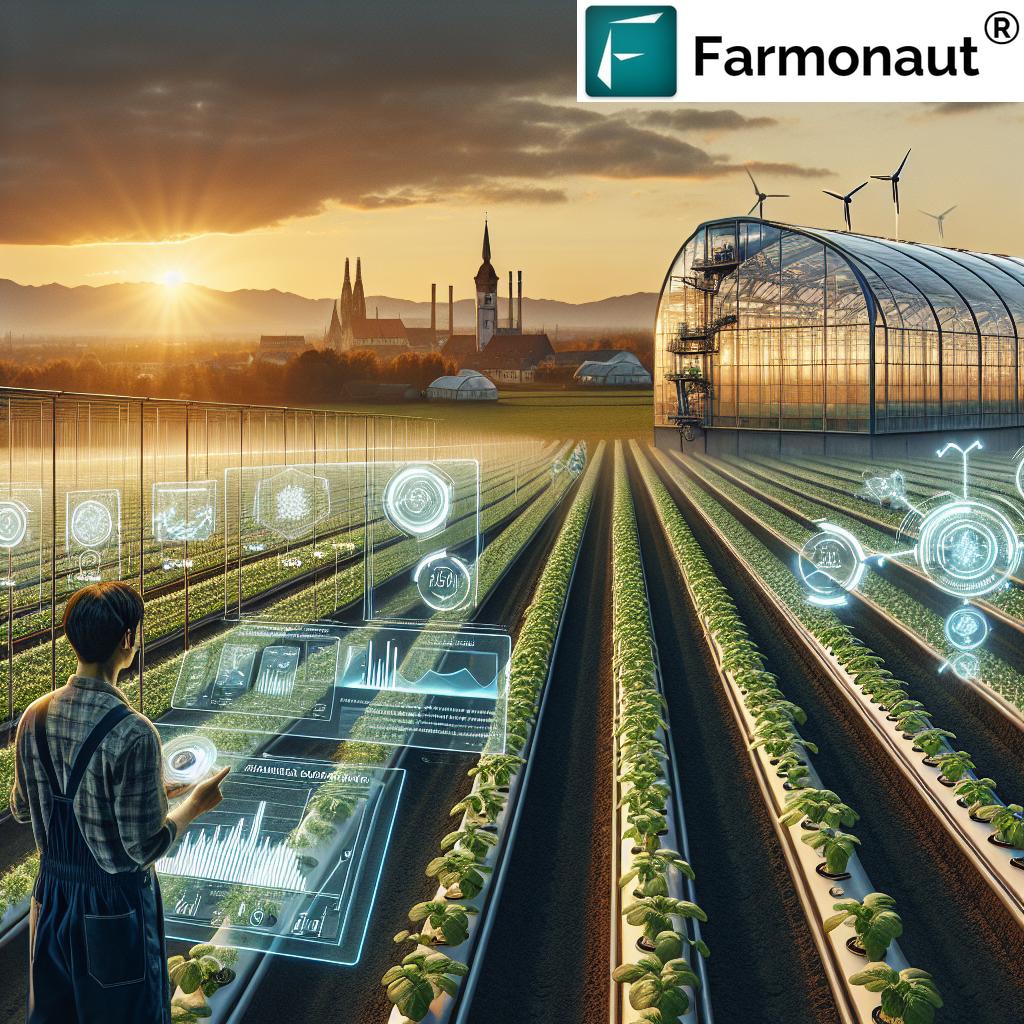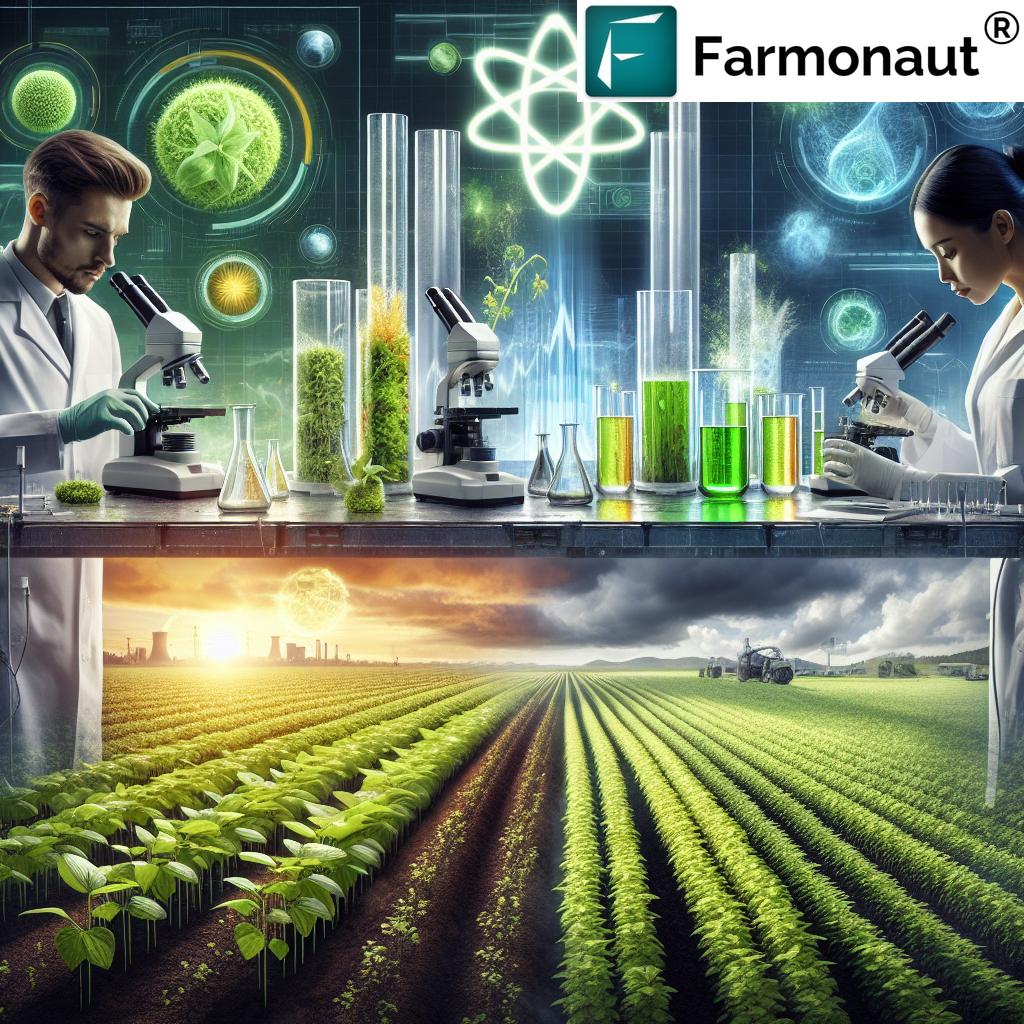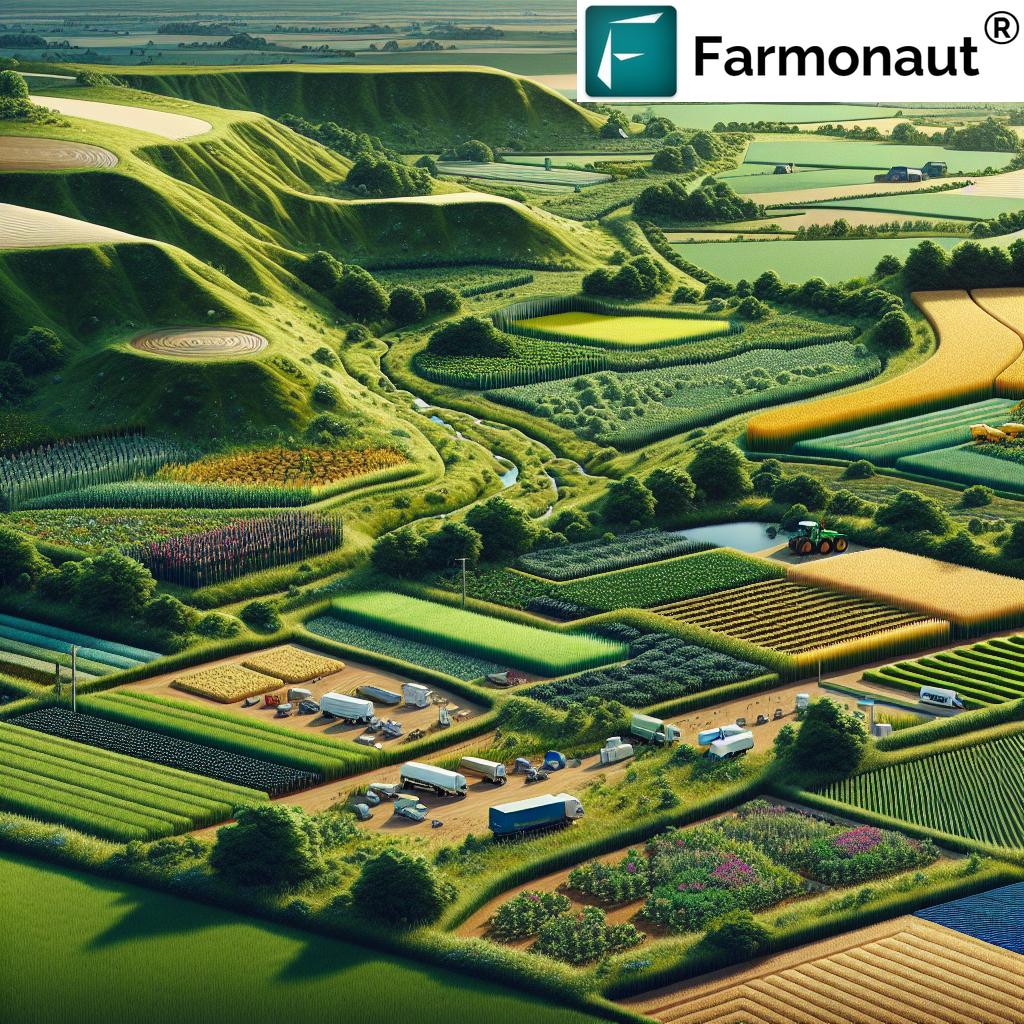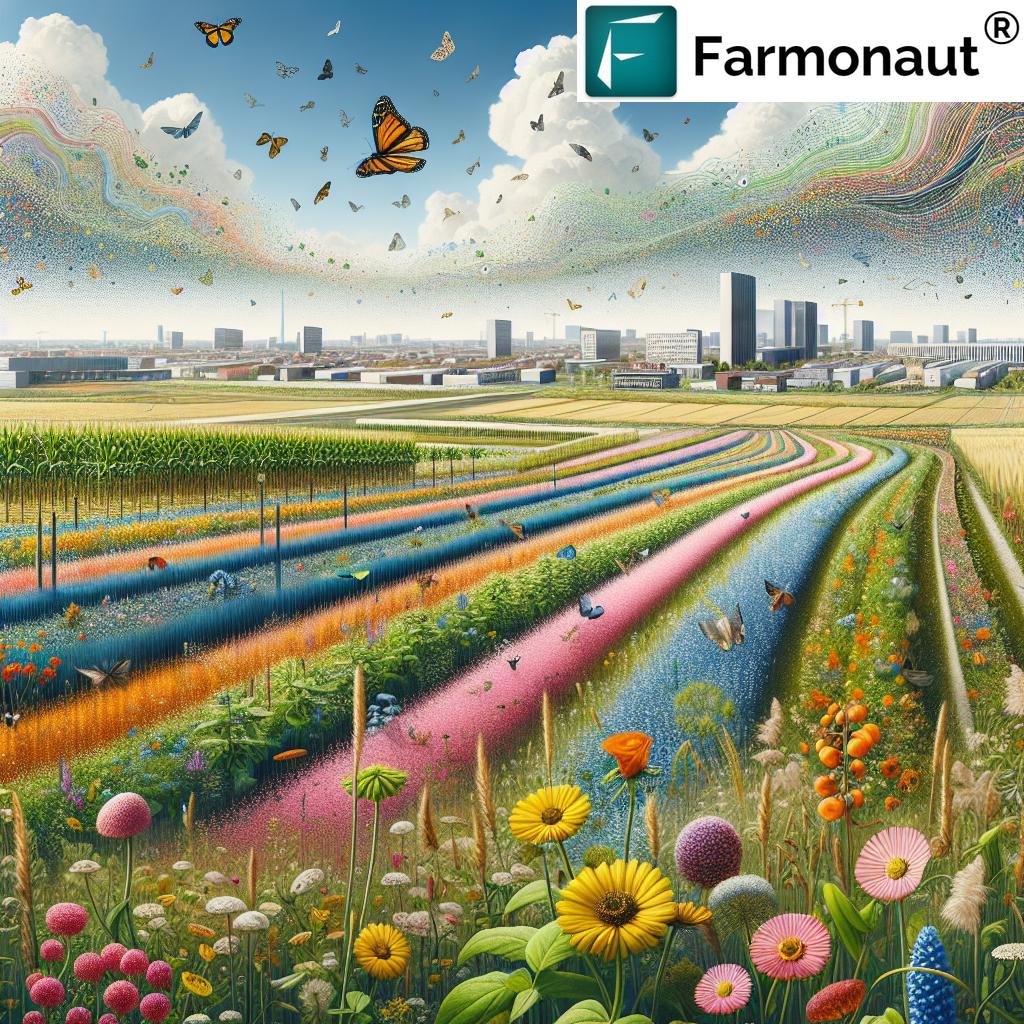“2025 snapshot: 6 urban agriculture drivers—vertical farms/CEA, circularity, EU reforms, food-miles cuts, resilience, jobs.”
“EU-27 focus: urban agriculture trims city food miles and expands agriculture jobs under evolving 2025 policy reforms.”
Urban agriculture Europe 2025: Essential Trends
Urban agriculture Europe has moved beyond a niche experiment. By 2025, it is an integral component of resilient food systems across the EU. From Amsterdam and Rotterdam to Copenhagen, Barcelona, Paris, and Warsaw, cities have scaled rooftop farms, indoor vertical microgreen facilities, community gardens, and integrated peri‑urban orchards. The aim is clear: reduce miles traveled, increase freshness, and strengthen security of local supply. This shift is driven by EU Green Deal targets, municipal climate adaptation plans, and supply chain lessons from recent disruptions. The result is a resilient set of systems positioned to deliver environmental, social, and economic benefits for european communities.
Table of Contents
- Why urban agriculture Europe moved from niche to integral by 2025
- Technology at the core: CEA, vertical farms, hydroponic and aeroponic systems
- Circularity and resource loops in european cities
- EU policy, financing mechanisms, and workforce development
- Agriculture jobs Europe: employment, inclusion, and skills
- Environmental outcomes and constraints of urban farming
- Market integration, logistics, and municipal procurement
- Europe 2025 Urban Agriculture Trend–Impact Comparison (Estimated)
- How we at Farmonaut support urban agriculture europe
- Outlook to 2030: scaling resilient systems across europe
- FAQ: Urban agriculture Europe 2025
Why urban agriculture Europe moved from niche to integral by 2025
Urban agriculture in europe has moved from a niche experiment to an integral component of resilient systems. Several forces converged to accelerate this shift:
- Policy alignment: The EU’s Farm to Fork strategy and broader urban agenda empowered municipal authorities with tools to reform policy, update zoning, and pilot food-system innovations. Cities were encouraged to protect growing space in masterplans, repurpose vacant lots, and allow farming in warehouses.
- Climate adaptation: Heatwaves, drought, and intense rainfall events highlighted the need for urban green infrastructure. Rooftop gardens and rooftop greenhouses contribute to stormwater capture, cooling, and biodiversity corridors.
- Supply chain resilience: The pandemic-era lessons emphasized localized production, reducing dependencies and food waste from delayed logistics. Shorter chains helped ensure freshness and stable pricing.
- Technology: Controlled‑environment agriculture (CEA) matured with better LEDs, automation, and digital sensors. These enabled consistent yields and year-round supply for retail, restaurants, and institutional buyers.
- Jobs and inclusion: Workforce development programs created pathways into agriculture jobs europe, opening doors to horticulture, maintenance, and logistics roles in urban contexts.
- Citizen engagement: Community gardens restored social ties and became common-good spaces. They provided education, nutrition access, and cultural connections through diverse crops.
These dynamics reshaped how agriculture europe is planned and operated. The combined effect delivered shorter miles, higher efficiency, better security, and climate‑smart use of space.
Technology at the core: CEA, vertical farms, hydroponic and aeroponic systems
Technological innovation is central to urban agriculture europe in 2025. Vertical farms and CEA facilities operate with increased efficiency, often paired with rooftop solar arrays and heat recovery from buildings. LED spectra are tuned to plant development stages, while automation handles seeding, harvesting, and sanitation.
- Hydroponic and aeroponic: Recirculating systems heavily reduce water demand compared to open-field methods, enabling precise nutrient management and minimizing waste.
- Microgreen production: Indoor microgreen crops deliver fast growth cycles and high nutrient density, aligning with demand in urban market channels and chefs’ menus.
- Digital tools: Networked sensors and AI crop modelling optimize light, humidity, and fertigation setpoints. Early-stress alerts prevent pest or disease outbreaks and help enable precise timing for harvests.
- Blockchain traceability: Blockchain-based traceability (note: not cryptocurrencies) ensures that every tray of leaf crops has a transparent data trail from seeding to delivery, a key requirement for premium buyers and public canteens.
European builders are integrating CEA stacks into adjacent mixed-use properties. Shared thermal loops distribute recovered heat, while onsite PV contributes to baseload. In Copenhagen and Paris, municipal utilities are mapping where urban farms can tap waste heat or CO2 streams to further boost productivity.
Circularity and resource loops in european cities
Circularity principles guide projects across the EU. In 2025, organic waste becomes compost or biochar, captured rainwater irrigates beds, and nutrient streams from adjacent processors feed aquaponic grow systems. These loops boost efficiency, lower inputs, and reduce waste.
- Waste heat and CO2: Greenhouses paired with heat recovery from data centers or district energy networks cut operational energy costs and stabilize climates for leafy greens and tomatoes.
- Water reuse: Closed-loop treatment captures nutrient run-off and filters it back to fertigation. This aligns with water‑scarcity strategies in Southern europe, including Barcelona’s metropolitan plans.
- Soil remediation: On brownfield sites, cautious remediation precedes planting. Soil testing and containment safeguards public health while restoring ecological functions.
In agriculture europe, such circular innovations are transforming how local food is produced within dense districts and peri‑urban zones. Rooftop gardens absorb stormwater; orchards create shade; and composting hubs convert market residues into soil amendments for community plots.
EU policy, financing mechanisms, and workforce development
Policy and finance have matured in 2025. The EU Farm to Fork strategy and urban agenda instruments encourage reforms that lower barriers for adaptive reuse of existing spaces. Tax incentives, startup grants, and low‑interest loans support pilot scaling. Municipalities are standardizing permitting and clarifying rules for rooftop access, greenhouse construction, and waste‑to‑resource facilities.
- Public‑private tools: Partnerships help pool risk for first‑of‑a‑kind sites. Impact investors are underwriting early investment in markets where price premiums for freshness and transparency exist.
- Workforce pipelines: Co‑funded programs connect vocational schools with urban farms. Training spans horticulture, CEA operations, HVAC, and food‑safety protocols.
- Procurement: City canteens, hospitals, and schools tweak procurement to recognize quality attributes like minimal miles traveled, use of renewables, and strict traceability.
In agriculture en europe, these moves are knitting together stable local supply chains. Specific city priorities vary—Paris leans toward rooftops; Barcelona integrates peri‑urban belts; Copenhagen emphasizes energy‑positive greenhouses—but the trajectory is shared across the EU‑27.
Agriculture jobs Europe: employment, inclusion, and skills
The employment impact is tangible. Agriculture jobs europe now span a broad spectrum—from horticulture technicians in vertical facilities to logistics coordinators, educators in community gardens, and orchard managers at the peri‑urban edge.
- Role diversity: Engineering for climate systems, biosafety, and automation; quality assurance and data analytics; delivery routing and fleet operations; and teaching roles in farm‑to‑schools curricula.
- Skills pathways: While high‑tech CEA roles demand technical skills, community plots and orchards offer inclusive entry points for volunteers, social enterprises, and paid apprentices.
- Equity emphasis: Municipal strategies emphasize targeting lower‑income districts with subsidized produce boxes, market stalls, and cooperative ownership models.
Because agriculture of europe is diversifying, career pathways are no longer limited to rural areas. Urban farming is creating local careers where people live, reinforcing neighborhood ties and promoting health.
Environmental outcomes and constraints of urban farming
Environmental outcomes are broadly positive but nuanced. Urban farms can reduce the lifecycle footprint of perishable crops by reducing transport and spoilage. Cooling from green roofs and tree‑lined orchards mitigates heat islands. In addition, rain gardens provide stormwater retention and habitat.
- Energy trade‑offs: Intensive CEA consumes energy, so success depends on renewable integration, efficient HVAC, and meticulous envelope design.
- Water savings: Hydroponic and aeroponic systems dramatically cut water use in leafy‑green production, often above 80% versus conventional baselines.
- Brownfields: Soil remediation and ongoing monitoring are essential where contamination risks exist. Elevated beds and closed-loop irrigation reduce exposure.
Across europe, performance varies by project type and energy mix. Yet, when farms are powered by clean grids or onsite renewables, net GHG profiles improve, especially for short-shelf-life crops.
“2025 snapshot: 6 urban agriculture drivers—vertical farms/CEA, circularity, EU reforms, food-miles cuts, resilience, jobs.”
Market integration, logistics, and municipal procurement
Even with strong public interest, small urban producers face hurdles. Integration with mainstream market channels can be difficult without aggregation hubs and shared processing. In response, municipal strategies are building infrastructure for collective washing, packing, and labeling.
- Logistics: Cold chains and delivery routes must be optimized to preserve freshness. Electric vans and cargo bikes address the “last mile.”
- Standards: Harmonized food‑safety protocols and labeling reduce transaction costs, easing entry into public procurement with schools and hospitals.
- Digital sales: Subscription boxes and click‑and‑collect channels allow farms to predict demand, cutting waste and raising margins.
As these pieces align in agriculture europe, urban producers find stable pathways into retail, restaurants, and institutional purchasing frameworks.
Europe 2025 Urban Agriculture Trend–Impact Comparison (Estimated)
This comparison matrix helps scan key sustainability, economic, and policy signals across leading models in urban agriculture europe. Figures are indicative ranges for editorial guidance only; actual values vary by site, technology, and energy mix.
| Trend/Model | Food Miles Reduction (%) | Water Savings vs Conventional (%) | Energy Use (kWh/kg) | GHG Reduction (kg CO2e/kg) | Yield Density (kg/m²/year) | Job Creation (jobs per 1,000 m²) | Capex Intensity (€/m²) | Payback (years) | Policy Readiness | Adoption Maturity | Circularity Potential | Resilience Contribution | Notable EU City Examples |
|---|---|---|---|---|---|---|---|---|---|---|---|---|---|
| Vertical Farms (CEA) | 70–95 | 80–95 | 4–14 | 0.2–1.0 (renewables-dependent) | 70–200 | 6–15 | 800–2,500 | 5–10 | Medium–High | Scaling | High | High | Paris, Copenhagen |
| Rooftop Greenhouses | 60–90 | 30–60 | 1.5–5 | 0.1–0.6 | 15–40 | 4–8 | 300–1,200 | 4–9 | High | Mature | Medium–High | High | Paris, Barcelona |
| Community Gardens | 30–70 | 10–40 | 0.2–1.0 | 0.05–0.3 | 2–8 | 8–20 | 30–150 | 2–6 | High | Mature | Medium | Medium | Amsterdam, Warsaw |
| Indoor Microgreens | 70–95 | 85–95 | 2–8 | 0.2–0.8 | 80–250 | 10–18 | 600–1,800 | 3–7 | Medium | Scaling | High | High | Rotterdam, Copenhagen |
| Aquaponics | 50–80 | 60–90 | 2–6 | 0.1–0.5 | 20–60 | 7–14 | 500–1,500 | 4–8 | Medium | Pilot–Scaling | High | Medium–High | Barcelona, Paris |
| Circularity Loops (waste heat/CO2/water reuse) | 40–85 | 40–90 | — | 0.1–1.2 (project-dependent) | — | 3–10 | 100–600 | 2–6 | Medium–High | Scaling | High | High | Copenhagen, Paris |
| EU Policy Reforms (CAP pilots, Green Deal incentives) | — | — | — | System-level | — | — | — | — | High | Mature–Scaling | High | High | EU‑27 |
How we at Farmonaut support urban agriculture europe
As Farmonaut, we support urban agriculture europe with satellite‑driven insights, AI advisories, and blockchain traceability to make local production smarter and more transparent. Our mission is to make space‑based intelligence accessible to growers, businesses, and public agencies across europe.
- We provide satellite-based monitoring of vegetation health (NDVI), canopy vigor, and water stress so operators can enable precise fertigation and reduce waste. This helps vertical farms, rooftops, and community plots align resources with plant needs.
- Our Jeevn AI Advisory system uses weather forecasts and satellite data to recommend timely actions, from harvesting windows to irrigation scheduling, raising efficiency and success rates.
- With blockchain-based traceability (note: not cryptocurrencies), we secure the data trail—from seeding to delivery—giving confidence to retail, restaurants, and institutional buyers.
- Our environmental impact tools allow operators to track carbon and water performance, which supports procurement criteria under EU policy frameworks.
Farmonaut API lets developers integrate satellite layers and advisory outputs into farm dashboards, city portals, and logistics tools. For implementation guidance, see the API Developer Docs.
Explore specific solution pages that align with 2025 priorities in agriculture europe:
- Carbon Footprinting: Monitor emissions, energy mix, and sequestration factors for rooftop greenhouses, vertical facilities, and peri‑urban orchards. This supports policy reporting and helps reduce footprint while meeting green deal targets.
- Traceability: Secure seed‑to‑fork data. Share verifiable histories with market channels and procurement teams, strengthening integration with schools and hospitals.
- Fleet Management: Optimize urban delivery routes and cold‑chain use. Cut miles, reduce fuel, and improve punctuality for local supply.
- Large‑Scale Farm Management: Coordinate multi‑site farms, cooperative community plots, and peri‑urban belts. Assign tasks, track inputs, and standardize protocols across teams.
- Crop Loan and Insurance: Use satellite verification to improve access to finance for urban growers and social enterprises. Lower risk for lenders with objective field data.
- Crop Plantation & Forest Advisory: Evaluate species mixes for orchards, shade trees, and regenerative belts that stabilize microclimates in dense neighborhoods.
Outlook to 2030: scaling resilient systems across europe
By 2025, urban agriculture europe is firmly embedded in sustainability strategies. Looking to 2030, three conditions will determine whether it scales equitably:
- Affordable clean energy: Continued grid decarbonization and building‑scale renewables will shrink CEA footprints while controlling costs.
- Skills and inclusion: Expanding programs to build technical skills in automation and biosecurity, while keeping open on‑ramps via community plots.
- Policy continuity: Stable policy signals—zoning protections, tax incentives, and flexible procurement—will increase investor confidence and support long‑term capital cycles.
Local success in europe will involve pragmatic governance, targeted investment, and community engagement, ensuring that agriculture of europe remains a cornerstone of resilient food systems.
FAQ: Urban agriculture Europe 2025
What is the role of vertical farms and CEA in Europe by 2025?
Vertical farms and CEA deliver year‑round production of leafy greens and herbs with high yield density and precise resource use. They are often paired with rooftop solar and heat recovery to improve efficiency.
Do urban farms really reduce emissions?
Yes—especially for perishable produce. Shorter transport miles, less spoilage, and renewable power can cut emissions. Outcomes depend on the energy mix, building design, and logistics practices.
How are EU policies helping?
The EU Farm to Fork strategy and city‑level policy reforms ease permitting, provide grants, and enable adaptive reuse. These create a clearer path to scale for urban growers.
What jobs are being created?
Agriculture jobs europe include horticulturists, systems engineers, logistics coordinators, educators, and data analysts. Workforce development programs prepare residents for roles across farms and food hubs.
Is blockchain necessary for urban agriculture?
Blockchain traceability is increasingly used to verify provenance and growing conditions. It helps with institutional procurement and consumer trust (note: this is distinct from cryptocurrencies).
How does Farmonaut fit in?
We offer satellite monitoring, AI advisories, and traceability tools that help urban farms optimize resources, document sustainability, and integrate into local market channels. See our API and developer docs for implementation.
Where is urban agriculture most advanced?
Advancement is visible across the EU‑27, with notable momentum in Paris, Copenhagen, Barcelona, Amsterdam, and Warsaw. Each city has distinctive priorities that suit its climate and built form.
What challenges remain?
Key issues include regulatory fragmentation, high capex for vertical facilities, competition for space, and integrating small producers into mainstream market channels. Solutions focus on standardizing permits, shared processing hubs, and municipal procurement.
Traceability,
Carbon Footprinting,
Fleet Management, and
Large‑Scale Farm Management.
How can new projects finance startup costs?
Developers typically combine grants, concessional loans, and impact capital. Solid business cases emphasize diversified revenue (B2C boxes, B2B contracts) and operational efficiency via automation and circular resource loops.
If you are assessing a new site, align technical design with grid decarbonization plans, rooftop structure tolerances, and local procurement frameworks to accelerate approvals.
Subscription options
To explore our platform tiers and choose what fits your urban or peri‑urban operation, view our pricing below.
Summary
By 2025, urban agriculture europe has become a durable pillar of sustainable food systems. CEA and vertical farms are delivering consistent yields with smarter use of water and nutrients. Circular loops turn waste into resources. EU policy and financing mechanisms have matured, while workforce development programs are opening pathways to jobs in horticulture, engineering, and logistics. Environmental outcomes are promising where renewables power operations. Remaining challenges—permitting, capex, and integration into market channels—are being addressed through standardized rules and municipal procurement. With steady investment, affordable energy, and skills pipelines, Europe’s cities can continue creating resilient, green, and equitable food futures.













